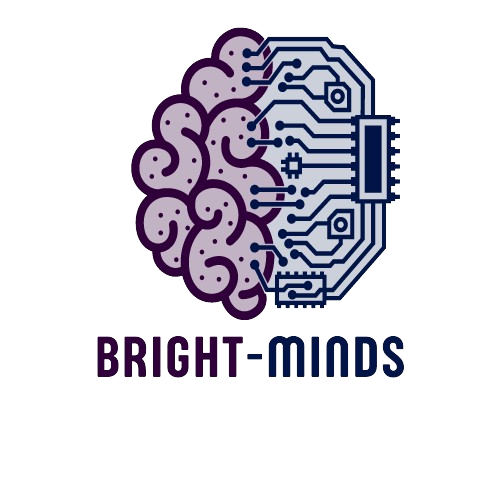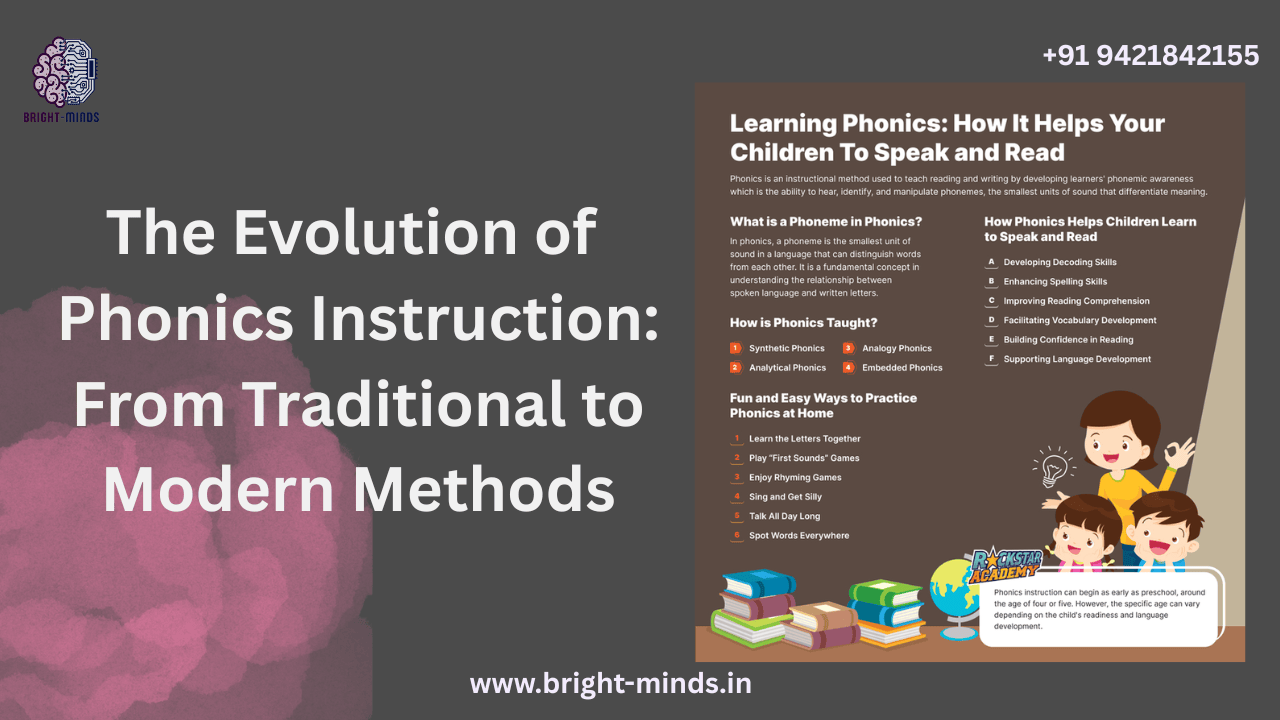The Evolution of Phonics Instruction: From Traditional to Modern Methods
In the journey of learning to read, phonics has always played a vital role. From the simple repetition of letter sounds in classrooms decades ago to today’s interactive, evidence-based teaching models, the evolution of phonics instruction has transformed how children acquire reading skills. Phonics is not merely a subject—it’s a bridge that connects spoken language to written words. Understanding its transformation helps educators, parents, and institutions implement strategies that truly empower learners in today’s digital age.
How It All Began: The Traditional Foundations of Phonics
In the early days of literacy education, phonics instruction was often rooted in rote memorization and repetition. Teachers relied heavily on drills, flashcards, and sound charts to help children recognize letter sounds and blend them into words. While effective to some extent, this traditional approach was often rigid, leaving little room for creativity or differentiated learning. The focus was on accuracy and memorization rather than comprehension and engagement.
In traditional phonics classrooms, learners recited sounds in unison, repeated lists of words, and practiced dictation exercises daily. This method was largely teacher-centered, where students listened, repeated, and memorized. Although it laid the groundwork for literacy development, it often failed to address the individual learning pace and style of every child.
Despite these limitations, traditional phonics instruction built strong foundational reading skills. It introduced generations of learners to the concept that letters and sounds have systematic relationships—a concept that remains at the heart of modern phonics approaches today.
The Shift Toward Evidence-Based Reading Practices
As educational research advanced, experts began to question whether rote phonics alone was enough. In the late 20th century, the evolution of phonics instruction began taking a new turn—one that emphasized understanding over memorization. Studies in cognitive psychology and linguistics revealed that children learn best when phonics is taught in meaningful contexts rather than isolated drills.
This led to the rise of systematic and synthetic phonics approaches, where students learn how to decode words step by step. Instead of random memorization, teachers started introducing phonemes (individual sounds) and graphemes (letters or letter combinations) systematically, helping students apply them to real reading experiences. This approach not only improved reading fluency but also enhanced comprehension.
Moreover, the shift toward evidence-based instruction encouraged the use of formative assessments and continuous feedback. Teachers began to identify reading gaps early and adjust instruction accordingly, ensuring that no learner was left behind.
Integrating Technology: The Modern Approach to Phonics
Today, phonics instruction looks vastly different from the classrooms of the past. The digital revolution has brought interactive learning tools, gamified reading apps, and multimedia resources that make learning phonics both fun and effective. Interactive whiteboards, phonics games, and personalized learning platforms allow children to engage with sounds, letters, and words through multisensory experiences.
Modern phonics programs leverage technology to cater to various learning styles. Visual learners benefit from animations and illustrations that connect sounds to letters. Auditory learners can listen to pronunciation and rhyming patterns, while kinesthetic learners can participate in touch-based or motion-based activities.
For example, many schools now use adaptive learning software that tracks each student’s progress and automatically adjusts difficulty levels. This personalized approach ensures that every child learns at their own pace, reinforcing confidence and retention. The integration of artificial intelligence and speech recognition tools further enhances the effectiveness of phonics learning by providing instant feedback on pronunciation and reading accuracy.
From Classrooms to Homes: Expanding Learning Environments
Another significant development in the evolution of phonics instruction is the expansion of learning beyond the classroom. Parents, educators, and digital platforms have formed a collaborative ecosystem where reading is encouraged in multiple environments. Online phonics courses, mobile learning apps, and YouTube-based phonics tutorials have made literacy accessible to children across the globe—even in remote areas.
This democratization of learning ensures that every child, regardless of location or resources, can access quality phonics instruction. Parents now play a more active role, using digital resources to reinforce classroom learning at home. This partnership between home and school environments nurtures consistency, helping children develop stronger reading habits early on.
Balancing Tradition and Innovation in Phonics Education
While modern phonics methods have introduced exciting possibilities, educators must remember that innovation works best when combined with strong foundational principles. Traditional phonics instruction emphasized discipline, repetition, and mastery—qualities that remain essential for reading fluency. Modern methods, however, bring in creativity, engagement, and adaptability.
The best phonics instruction today blends both worlds: structured, systematic teaching rooted in proven methods, and innovative tools that enhance engagement and understanding. For example, teachers might begin a lesson with a classic sound-blending activity and then reinforce it through an interactive digital storybook or phonics game.
This balanced approach allows educators to address diverse learning needs while maintaining a focus on skill mastery. It also prepares students for future literacy demands, such as digital reading comprehension and critical thinking.
The Role of Educators and Institutions in Today’s Phonics Landscape
Teachers today are more than just facilitators of phonics—they are learning designers who integrate technology, research, and empathy into their classrooms. Training educators in modern phonics methodologies is crucial for maintaining high literacy outcomes. Institutions must invest in professional development programs that equip teachers with updated strategies, from phonemic awareness instruction to data-driven progress tracking.
Moreover, schools should foster inclusive environments where children with learning differences, such as dyslexia, can thrive. Modern phonics instruction, when paired with assistive technologies like text-to-speech or phoneme mapping tools, can make literacy education more equitable.
Industry Trends and Future Directions
The education technology market continues to grow rapidly, with phonics-based learning tools ranking among the top literacy solutions worldwide. According to industry reports, the global market for phonics apps and reading software is expected to expand significantly in the coming years as schools embrace hybrid and remote learning models.
AI-powered reading companions and speech analysis tools are likely to become mainstream, offering real-time reading assessments and personalized phonics plans. The evolution of phonics instruction will continue to be driven by data, creativity, and inclusion—ensuring that every child develops a lifelong love for reading.
Why Understanding Phonics Evolution Matters
For educators, understanding how phonics has evolved helps refine teaching strategies and improve learning outcomes. For parents, it provides insight into why certain methods are more effective today. And for institutions, it highlights the importance of investing in innovative literacy programs that meet modern learners’ needs.
Phonics instruction is no longer a static, one-size-fits-all concept. It’s an evolving framework built on research, technology, and collaboration. The more we adapt and evolve, the stronger the bridge between learning to read and reading to learn becomes.
Inspiring the Next Generation of Readers
The story of phonics is ultimately a story of progress—how education continues to evolve to meet the needs of young minds. The modern era of phonics instruction blends traditional wisdom with modern technology, ensuring that learning remains both effective and enjoyable.
If you’re an educator, parent, or learning enthusiast, now is the perfect time to explore how these evolving methods can benefit your learners. Visit our website for expert-designed phonics resources, professional development courses, and literacy programs that empower both teachers and students to succeed in today’s digital learning world.
You may also like this:-

